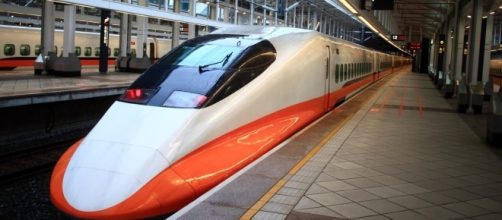Gov. Jerry Brown had a dream: to link Los Angeles and San Francisco by a high-speed bullet train. It would haul passengers 700 miles in two hours and 40 minutes. It entailed a proposed cost of $32 billion with an initial $10 billion bond to cover initial costs. And now the project is facing soaring cost overruns, an out-of-control budget, and missed targets.
Given this was proposed during the housing mortgage crisis of 2008, voters were promised high-wage positions and a low-cost alternative to flying. Though some were leery the project was passed, and now Brown’s trainspotting obsession has ballooned from $32 billion to $68 billion with a completion date sometime after 2025.
Compare that to the First Transcontinental Railroad (1,912 miles), which took six years to complete.
To understand the scope and immense failure of the project, you only have to look at the progress made and money spent. The rail was divided up into different segments that would be tackled individually. That way the San Joaquin Valley segment could become operational while work continued elsewhere. But not a single rail has been laid. And the 118-mile segment’s cost has shot up nearly 50 percent to $10 billion.
California's bullet train is hurtling toward a multibillion-dollar overrun, a confidential federal report warns https://t.co/bcBDuooht4
— JohnnyJet (@JohnnyJet) January 15, 2017
Leaked report
A leaked report by the Federal Railroad Administration to the LA Times showed the rail’s San Joaquin Valley’s segment—scheduled for completion this year—was actually seven years behind schedule.
The project is also facing legal, fiscal, and environmental challenges that will push its completion date out even further. And costs associated with “building bridges, viaducts, trenches and track” have been vastly under budgeted.
The last stage will challenge engineers working on the project. Unlike many regions, the rail traverses unstable, earthquake-prone regions. That means workers will have to substantially reinforce the miles of tunnels that need boring. That alone will add more money and further delays. Brown has remained undeterred in finishing his legacy project. But financial challenges may eventually win.
Most-read @sacbee_news: Bullet train suffers two big setbacks that could be fatal https://t.co/gexz8oo691, by @WaltersBee pic.twitter.com/jE0bQ8IHBY
— Linda Gonzales (@lgonzales) March 4, 2017
Major setbacks
Brown had planned to use 25 percent of the state’s new cap-and-trade scheme to fight climate change, but that produced little money.
And the Trump administration, which Brown has berated both publically (and preemptively hired Eric Holder to fight the new administration on every issue), placed a $647 million grant on hold as the project’s troubles mounted.
Under the Obama administration, the train to nowhere received a $3.48 billion grant for the San Joaquin Valley segment. California was supposed to match the money but used a waiver to postpone their responsibility. The legislature is currently deciding the bullet train’s fate even though the votes are lacking to waste more taxpayer money.
Doing the math on California's bullet train fares http://t.co/M5lhNYizQv
— Ralph Vartabedian (@RVartabedian) May 10, 2015
Federal bailout
Finally, officials believe 18 to 31 million people will use the rail after its finished, despite just 11 million flying between the two cities each year.
They also project customers will pay 20 cents a mile even though the East Coast Acela high-speed rail charges over 50 cents a mile. The math isn’t there for a multibillion-dollar project.
Brown is now looking to the current administration for a slice of the oft-repeated $1 trillion infrastructure pie. California state, meanwhile, has at least $187 billion in costs to fix its already crumbling infrastructure (like the Oroville dam). If President Donald Trump is serious about government waste and abuse, he’ll immediately scrap any federal assistance of this high-speed train wreck.

